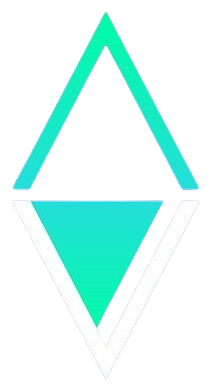Understanding Ethereum: A Deep Dive into the Blockchain Revolution
Ethereum, the second-largest cryptocurrency by market capitalization, is much more than just a digital currency. It serves as a robust blockchain platform for creating decentralized applications (dApps), fundamentally redefining how we interact with technology, finance, and governance.
What Sets Ethereum Apart?
Unlike Bitcoin, which is primarily designed as a digital currency, Ethereum enables users to create smart contracts—self-executing programs that run on the blockchain. This capability allows developers to build a variety of applications that can function without the need for external authorities or intermediaries, such as banks or tech giants.
The Origins of Ethereum
In late 2013, programmer Vitalik Buterin published a groundbreaking white paper that laid the foundation for Ethereum. This white paper proposed a blockchain that not only served as a medium of exchange but also allowed for programmable code. Alongside Buterin, co-founders such as Anthony Di Iorio, Charles Hoskinson, and Gavin Wood played critical roles in shaping this innovative vision. The Ethereum community took shape, fostering an ecosystem that would eventually host applications ranging from digital art marketplaces to complex financial protocols.
How Ethereum Works
At the heart of Ethereum lies the concept of smart contracts. These programs are not just passive; they are executable code stored on the blockchain that automatically executes when specified conditions are met. This functionality is crucial for many applications, including decentralized finance (DeFi) platforms and non-fungible tokens (NFTs). Smart contracts boast several advantages, such as transparency, tamper-proof execution, and the elimination of reliance on third-party services.
The Launch of Ethereum
Ethereum’s development kicked into high gear in early 2014, culminating in a successful initial coin offering (ICO) that raised over $18 million in Bitcoin. The network officially launched on July 30, 2015, under the name Frontier, aimed primarily at developers looking to experiment with dApps. In its early days, Ethereum utilized the same Proof-of-Work consensus mechanism as Bitcoin, requiring miners to solve complex puzzles to secure the network.
Transition to Proof-of-Stake
In September 2022, Ethereum underwent a monumental upgrade known as The Merge, transitioning from Proof-of-Work to a Proof-of-Stake (PoS) consensus algorithm. This shift dramatically reduced Ethereum’s energy consumption by over 99%. Validators now earn rewards by staking Ether, creating a more environmentally friendly and scalable network.
Ethereum’s Native Cryptocurrency: Ether (ETH)
Ether, the native cryptocurrency of Ethereum, serves multiple functions within the ecosystem. It is essential for executing transactions, powering applications, and securing the network. Divided into sub-units like Gwei and Wei, Ether facilitates everything from dApp transactions to staking rewards.
Real-World Applications
Ethereum’s infrastructure supports a variety of applications:
-
Social Networks: Earn rewards for your contributions on decentralized platforms.
-
File Storage: Enjoy affordable decentralized storage solutions.
-
Overseas Payments: Reduce costs and time in transferring money internationally.
-
Decentralized Exchanges (DEXs): Trade cryptocurrencies peer-to-peer, cutting out middlemen.
- DAOs: Engage in decentralized governance through community-driven decisions.
The DAO Experiment
One of Ethereum’s most audacious innovations is the Decentralized Autonomous Organization (DAO). Governed by smart contracts and community votes, DAOs provide a new way to structure organizations without centralized authority. However, the first major DAO, aptly named "The DAO," suffered a significant compromise in 2016, where attackers exploited vulnerabilities to siphon off $50 million worth of Ether. This incident led to a hard fork, creating two distinct blockchains: Ethereum (ETH) and Ethereum Classic (ETC).
The Rise of NFTs
Ethereum also sparked the explosion of non-fungible tokens (NFTs), unique digital assets that certify ownership of various items like art, music, and collectibles. The introduction of the ERC-721 token standard in 2017 allowed developers to create distinctive tokens, leading to phenomena like CryptoKitties and CryptoPunks. By 2021, these NFTs had gone mainstream, with high-profile sales drawing the attention of both the art world and the tech community.
Challenges Ahead
Despite its many successes, Ethereum faces significant challenges. Scalability remains a primary concern; with a maximum capacity of about 15 transactions per second, it’s far from rivaling traditional financial systems like Visa. The network often experiences high "gas fees" due to congestion, leading to calls for ongoing improvement and optimization.
The Road to Ethereum 2.0
To address these issues, Ethereum has embarked on a comprehensive upgrade journey, often referred to as Ethereum 2.0. Key milestones include launching the Beacon Chain in 2020 and the successful implementation of various upgrades, such as the London Hard Fork and Dencun, focusing on lower fees and scalability.
The Future of Ethereum
As Ethereum navigates its second decade, it continues to redefine our understanding of the internet, finance, community, and governance. The vision for a decentralized internet—often termed Web3—is within reach, even as competition from faster and cheaper alternatives looms.
Will Ethereum deliver on its ambitious promises, or will it cede ground to emerging technologies? The answer remains to be seen, but one thing is certain: Ethereum has fundamentally altered the landscape of the digital world, and its impact will be felt for years to come.



